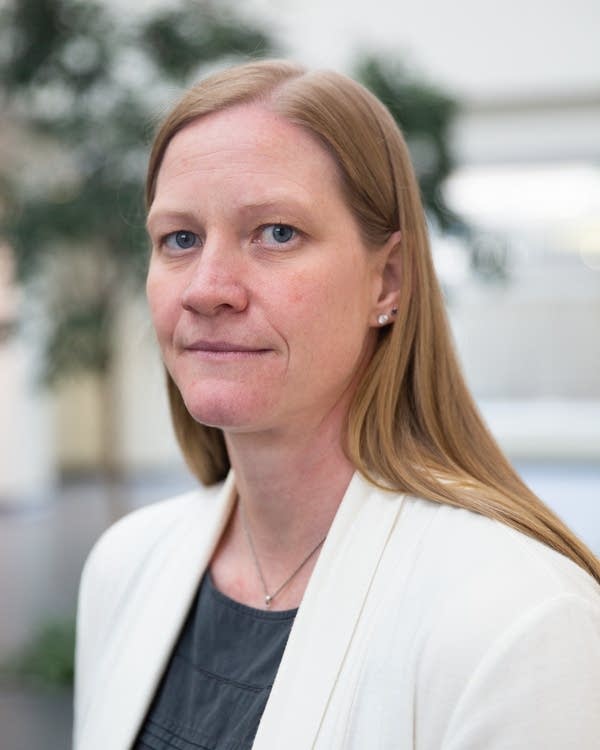Weight of thousands of Minnesota COVID deaths falls on those examining every one

Go Deeper.
Create an account or log in to save stories.
Like this?
Thanks for liking this story! We have added it to a list of your favorite stories.
Richard Danila has a stack of legal pads in his office with the handwritten names of nearly every Minnesota death in the pandemic.
There’s one of the first, a 92-year-old Hennepin County resident of a long-term care facility, and one of the most recent, a 73-year-old from Otter Tail County.
"I did it to slow myself down, because every single line is a real person, someone loved, someone cared for,” said Danila.
The state’s deputy epidemiologist with a 30-year-plus career at the Minnesota Department of Health, Danila said he writes down the name of each person who’s died of COVID-19 as a personal ritual he developed to process the tragedy playing out around him.
Turn Up Your Support
MPR News helps you turn down the noise and build shared understanding. Turn up your support for this public resource and keep trusted journalism accessible to all.

Danila is part of a team tasked with examining and reporting each COVID-related death in Minnesota — 7,639 to date. The tally of deaths Danila helps compile makes its way to Health Commissioner Jan Malcolm and then onto Gov. Tim Walz.
To Danila and his colleagues, each one is personal.
A puzzle to be solved
Every day, a batch of death certificates arrives from the department's vital records department that may be related to COVID-19. Sometimes there are a few, sometimes there are dozens.
The team then looks at the primary cause of death and contributing factors, where the patient lived and when they first tested positive for the virus.
"It's basically a puzzle we have to put together,” said Leslie Kollmann, co-lead of the mortality review unit who previously investigated unexplained deaths like SIDS in newborns. "And if we don't have all the pieces, we have to go find the pieces.”

Sometimes those clues are in autopsy reports or medical records, she said.
Kollmann's colleague Elizabeth Schiffman, who also leads the mortality review team, said they have always valued precision.
"We tried early on to be very consistent so that we were approaching things the same way so that it was defensible to those people who try to question and say, ‘You guys just don't know what you're doing. You're making everything up,’ ” Schiffman said.
Danila and his team spent years preparing for the possibility of a pandemic. For instance, Danila said they predicted we would need social distancing and remote learning to limit the spread, and planned for both.
But there were surprises.
"Never did we think about or consider that masking would somehow be political or [there would be] accusations that we were ginning up the statistics,” he said. “It just never dawned on us.”
Danila said that “has been the hardest for me, personally."
Devastating patterns
Danila, Kollmann and Schiffman said the work strains their mental health, especially when they see false claims that the pandemic isn't serious or that vaccines are unsafe and unnecessary.
They've worked every day, including weekends, for 16 months — a relentless schedule that forces them to think about COVID fatalities all the time.
A recent Centers for Disease Control and Prevention report underscores how widespread mental health struggles are among public health workers in the pandemic.

According to the report, of the more than 26,000 public health workers surveyed, more than half described at least one mental health condition in the last two weeks, including depression, anxiety, PTSD or suicidal ideation.
Kollmann has investigated unexplained deaths for a long time. But she said COVID-19 investigations are nothing like her old job because there are so many of them at once.
"For the first two months or so, I remembered almost every single name. And I think that was really tough,” she said. “You would read about them in newspapers or see them on the news and I'd be like, 'Oh, I know who that is.’ "
And when the death counts grew, Kollmann said she could see devastating patterns in the data.
"A father that would die one month, and then the next month, the son would die. And then the next couple of weeks, the mom would die,” she said. “It was just horrifying to see generations wiped out from a disease."
Most of the recent deaths are among people who aren't vaccinated. Schiffman says she toggles between anger and disbelief that so many people still refuse to get vaccinated.

"It's not about you,” she said. “Maybe you're not afraid of it, or maybe you don't care. But if you do things to protect everyone else, that's what it's supposed to be about."
She says she's having a hard time imagining going back to her regular job, investigating new cases of vector-borne illnesses found in ticks and mosquitos. She worries that distrust of her profession sown during the pandemic will make her job harder even after the pandemic.
With no relief in sight, Kollmann, who investigated the first COVID-19 death publicly reported in March 2020, said living with uncertainty of when this will end is sometimes the hardest part of the job.
"I know my mental health has really tanked. It's been really hard working on this since the beginning. And I know I'm going to be working on deaths for quite a while,” she said.


